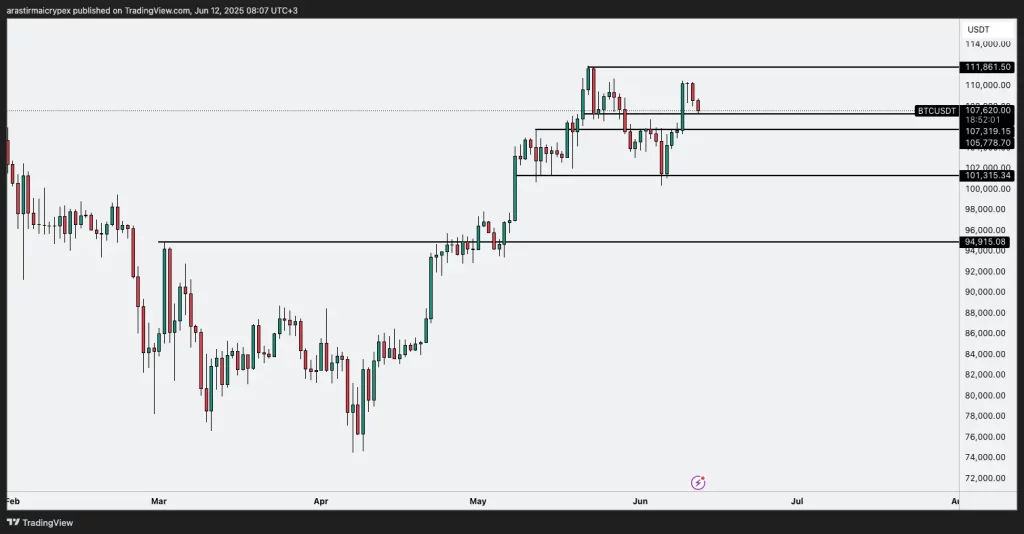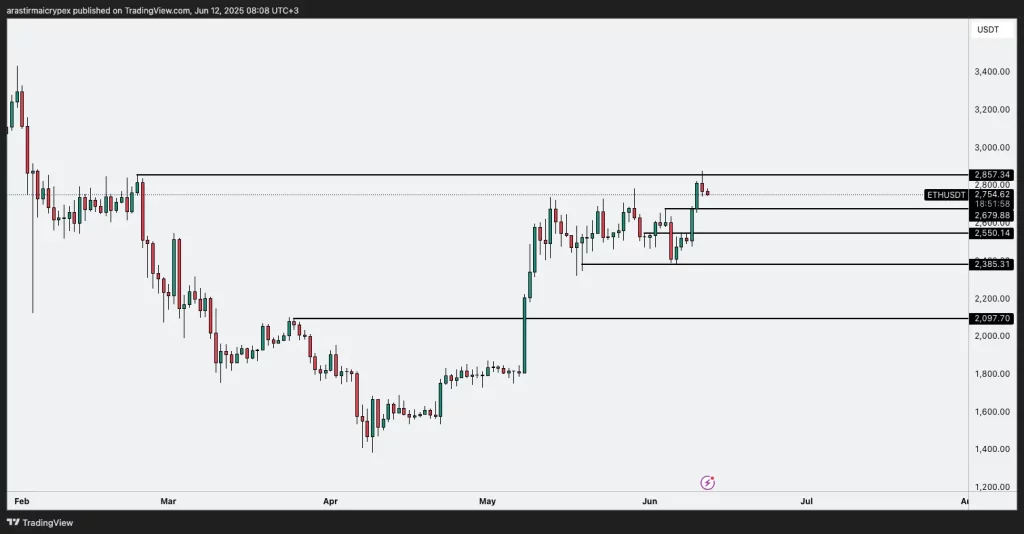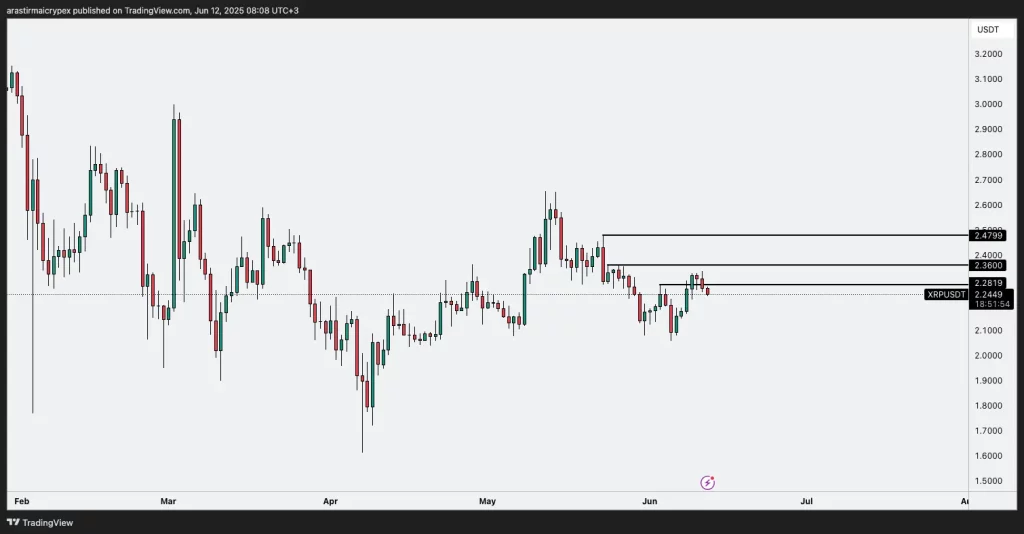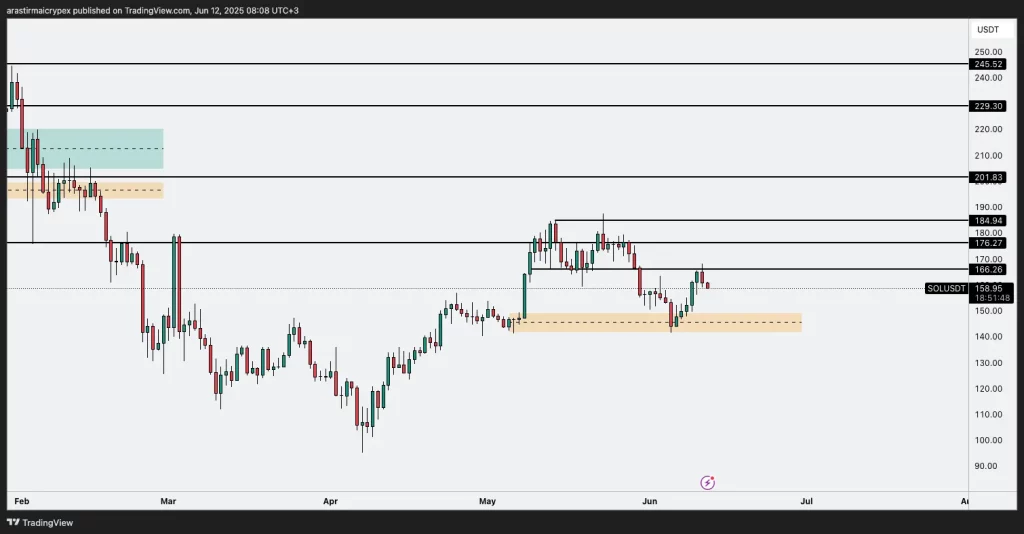US Senate Approves Stablecoin Bill, GENIUS Act Passes First Threshold – US-China Deal Completed in Principle
US Senate Approves Stablecoin Act, GENIUS Act Passes First Threshold
The US Senate has approved the comprehensive “GENIUS Act” bill aimed at regulating stablecoin issuers by a strong majority of 68-30. This bill is seen as a historic step towards the establishment of a long-awaited regulatory framework for digital assets in the US. The law introduces clear rules for digital tokens backed by real assets such as the US dollar. It paves the way for stablecoins such as USDC and USDT to be issued under both federal and state authorities. In addition, allowing some non-financial companies to issue stablecoins expands the scope of regulation.
Senator Bill Hagerty, who supported the bill, emphasized that the lack of this legal framework threatens the US leadership in the digital assets field. The GENIUS Act will now move to the House of Representatives, where the Senate version can be voted on as is, combined with other legislation, or amended. The law requires the President’s approval at the final stage for it to enter into force. This development, along with the Digital Asset Market Clarity Act recently passed by the House of Representatives, shows that there is great momentum in crypto regulations in the US.
US-China Deal Completed in Principle
US President Donald Trump announced that the deal with China has been “completed” following high-level talks in London. Although the deal is subject to final approval by Presidents Xi Jinping and Trump, it guarantees the US’s supply of rare earth elements while also paving the way for Chinese students to continue their education at American universities. The two countries have agreed on a “framework in principle” to ease long-standing trade tensions.
US Commerce Secretary Howard Lutnick stated that the deal would eliminate restrictions on rare earth metals and magnets, while the Chinese side stated that this development was an extension of the phone call on June 5 and the agreement reached in Geneva. The talks come after renewed tensions over mutual import restrictions and visa cancellations in areas such as artificial intelligence technologies and access to semiconductors. Trump has described the process as a “complete reset.”
U.S. Stablecoin Market Could Exceed $2 Trillion by 2028
U.S. Treasury Secretary Scott Bessent said in a statement to the Senate that the U.S. dollar-backed stablecoin market could surpass $2 trillion by the end of 2028 if legislative support is secured. The forecast is based on growth expectations created by the GENIUS Act. Bessent said stablecoins, particularly those backed by Treasury bonds, would increase the global use of the U.S. dollar and that this projection is “not only reasonable,” but could potentially reach much higher levels.
The GENIUS Act requires stablecoin issuers to back their assets entirely with U.S. dollars or liquid instruments, conduct annual audits and regulate foreign issuances. US President Donald Trump has also stated that he wants to sign this law before August. The total market value of US-based stablecoins is currently around $247 billion, making up 96% of the total stablecoin supply. As the legislative process progresses, important developments such as Circle’s IPO and stablecoin plans by major banks like Bank of America continue to come to the fore.
31% of Bitcoin Supply Now in Centralized Treasuries
According to a joint report by Glassnode, centralized treasuries, including governments, ETFs, and public companies, control about 31% of the Bitcoin supply. This amount is equivalent to about 6.1 million BTC, representing a value of $668 billion at current prices. The report suggests that institutional acceptance of Bitcoin is increasing and the asset is being viewed as a strategic store of value.
However, a significant portion of these BTCs may be held on centralized crypto exchanges, which means that retail investor assets are also included in this number. Furthermore, the top three players in each category hold between 65% and 90% of the total assets, indicating that early adopters continue to shape the structure of the market. In particular, DeFi, public companies, and ETF funds stand out as the areas where this concentration is most evident.
XRP Ledger Will Be Compatible with Ethereum Smart Contracts
Ripple and Peersyst Technology are preparing to launch an Ethereum Virtual Machine (EVM)-compatible sidechain of XRP Ledger in the summer of 2025, lowering the barrier to entry for developers using Ethereum tools. Ripple CTO David Schwartz announced at the Apex 2025 event that the sidechain will be live in the second quarter. This new architecture will allow developers to build applications using tools like Solidity, MetaMask, and Truffle, and wXRP will be used for transaction fees.
The sidechain will operate with a Proof-of-Authority consensus mechanism and aims for a transaction cost of under $0.01 with a capacity of over 1,000 transactions per second. The Axelar network will act as a bridge between XRPL and this EVM sidechain. A critical issue identified during a security audit conducted by Informal Systems in February 2025 has been resolved. Testnet data shows that 87 new projects have joined the XRPL ecosystem, including Strobe Finance, Vertex Protocol, and Secured Labs. This development aims to expand XRP’s non-payment use cases by increasing its DeFi programmability.
Ripple Launches Tokenized US Treasury Bonds on XRP Ledger with Ondo Finance
Ripple has taken its institutional-focused tokenized asset strategy a step further by integrating Ondo Finance’s short-term US Treasury bond product OUSG into XRP Ledger. With this integration, investors will be able to issue or redeem OUSG directly on XRPL via Ripple’s new stablecoin RLUSD. This structure aims to break the boundaries of traditional finance by offering 24/7 access to tokenized bonds.
OUSG is currently one of the largest tokenized Treasury products with a market cap of approximately $692 million. Ripple and Ondo are providing seed capital to support the product’s liquidity, while RLUSD is positioned as the underlying payment instrument for cross-network transactions. Ripple’s move aligns with its goal of strengthening XRPL’s position in the tokenized asset market, which is expected to reach $19 trillion by 2033. Offering a harmonious and efficient structure for institutional investors, this integration paves the way for more active representation of real-world assets on public blockchains.
GameStop Raises $1.75 Billion in New Funding for Bitcoin Treasury
GameStop has announced a new $1.75 billion convertible note issuance in order to strengthen its Bitcoin strategy. The company announced in May that it had adopted Bitcoin as a treasury asset by purchasing 4,710 BTC for approximately $500 million. The new funding is being offered only to institutional investors with the aim of continuing this strategy and using it in accordance with its investment policy. The bonds do not bear interest and will be repaid in 2032 if not converted before maturity.
After announcing a Bitcoin-focused investment policy in March, the company raised funds with another $1.3 billion bond issue. However, despite these developments, GME shares lost 10% in after-hours trading. GameStop’s strategy sees it join the ranks of publicly traded companies adopting Bitcoin as their primary reserve asset.
Ukraine Prepares to Consider Bitcoin as a Reserve Asset
The Ukrainian Parliament has tabled a bill that envisions changes to the central bank’s reserve asset policies. With this regulation, the National Bank of Ukraine (NBU) will be able to include crypto assets in its reserve portfolio, in addition to traditional reserves such as foreign exchange and gold. MP Yaroslav Zhelezniak argued that careful management of crypto assets could bring stability and digital growth to the country’s economy. The law only grants the central bank the authority to; details such as the amount, timing and method are left to the discretion of the NBU.
However, experts have serious reservations about the usability of Bitcoin as a central bank reserve. According to a report by Switzerland-based Sygnum Bank, the fact that a significant portion of the Bitcoin supply is concentrated in the hands of private companies weakens the “safe haven” feature of the crypto asset. The reduction of liquidity in the market by companies such as MicroStrategy and possible price volatility could cause Bitcoin to be a risky reserve asset for central banks. In this context, this step taken by Ukraine has also reignited global discussions.
Mercurity Fintech Makes $800 Million Bitcoin Reserve Move
Mercurity Fintech Holding (MFH) announced a long-term $800 million Bitcoin reserve plan in order to strengthen its balance sheet and deepen its digital asset strategy. The institution stated that it will manage the Bitcoin reserve with institutional-grade custody infrastructure and staking-supported liquidity instruments. With this move, the company aims to both generate returns from BTC and establish a stronger integration with decentralized finance protocols.
CEO Shi Qiu emphasized that they believe in the future role of Bitcoin in financial infrastructure, and said that the company wants to position itself at the center of the digital finance ecosystem. In addition, MFH is expected to be included in the Russell 3000 and Russell 2000 indexes by the end of this month. This development may increase the company’s visibility among institutional investors.
Stripe Acquires Crypto Wallet Company Privy
Payment giant Stripe announced that it will acquire Privy, which provides crypto wallet infrastructure. The deal is expected to be completed in a few weeks, while Privy will continue to operate as an independent product under the Stripe umbrella. Privy is known for its embedded wallet technologies that allow users to create crypto wallets without recording a seed phrase. Stripe CEO Patrick Collison emphasized that this acquisition is part of their goal to bring crypto and fiat closer together.
Privy supports over 75 million accounts and 1,000 development teams used in leading crypto applications such as OpenSea and Pump.fun. Stripe announced plans for stablecoin financial accounts last month and with Privy, they plan to further their goal of integrating crypto into mainstream payments systems. This acquisition clearly demonstrates Stripe’s growing interest in crypto.
————————————————————————————————
BITCOIN(BTC)
Bitcoin appears to have entered a short-term correction period after a strong rally on the chart. After the reversal from the 111,861.50 resistance, the price has approached the 107,319.15 – 105,778.70 support area. The reaction from these support levels will be critical for the continuation of the rise. If this area is broken downward, the selling pressure may deepen and the price may test lower levels. Above, the 111,861.50 level should be followed as clear resistance.

ETHEREUM(ETH)
Ethereum is priced in the critical resistance area after a strong upward move. After testing the 2,857.34 level on the ETH chart, the price experienced a slight pullback. Breaking the 2,857.34 resistance is of critical importance for the upward trend to continue. If this level is exceeded, the upward movement may accelerate. Otherwise, 2,679.88 and below 2,550.14 levels will gain importance as support. For now, ETH is likely to consolidate around the resistance in the short term.

RIPPLE(XRP)
The price in the XRP parity started a downward correction after testing the critical resistance zone of 2.36-2.47 USD. The 2.36 USD zone remains important as a short-term resistance level. If the current pullback continues, the support point stands out as the 2.20 USD level. Closes above 2.47 USD will be critical for XRP to start a strong upward movement.

AVALANCHE(AVAX)
AVAX price is currently consolidating between 20.25-22.79 USD. With the reaction from the resistance level (22.79 USD) formed in the last rise, the price is seen to move downward again. In the short term, the price can be expected to retreat towards the 20.25 USD support level. If this level is maintained, new upward attempts may be on the agenda. However, if closing below the 20.25 USD level occurs, selling pressure may increase and a decline towards the 15.27 USD level may be observed.

SOLANA(SOL)
In the SOL chart, it is seen that the price reacted from an important support area in the short term and started to move upwards. The recent bottom level (approximately 150-155 USD) is evident as the support area. On the upward side, the first resistance area is 166 USD, if this level is exceeded, the 176 and 184 USD areas can be targeted. However, in the current situation, the price needs to exceed and close above the 166 USD level in order to enter a clear uptrend.
